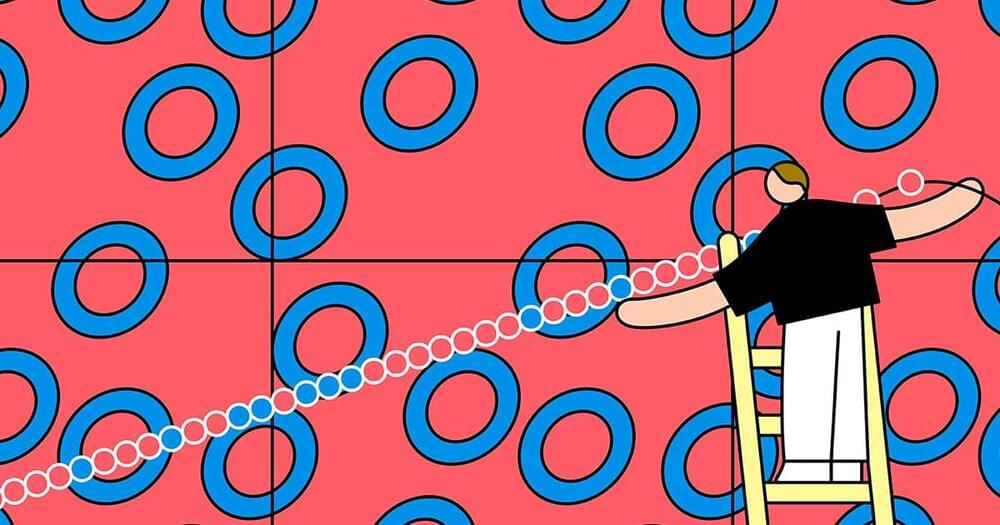The mathematician Ben Green of the University of Oxford has made a major stride toward understanding a nearly 100-year-old combinatorics problem, showing that a well-known recent conjecture is “not only wrong but spectacularly wrong,” as Andrew Granville of the University of Montreal put it. The new paper shows how to create much longer disordered strings of colored beads than mathematicians had thought possible, extending a line of work from the 1940s that has found applications in many areas of computer science.
The conjecture, formulated about 17 years ago by Ron Graham, one of the leading discrete mathematicians of the past half-century, concerns how many red and blue beads you can string together without creating any long sequences of evenly spaced beads of a single color. (You get to decide what “long” means for each color.)
This problem is one of the oldest in Ramsey theory, which asks how large various mathematical objects can grow before pockets of order must emerge. The bead-stringing question is easy to state but deceptively difficult: For long strings there are just too many bead arrangements to try one by one.
